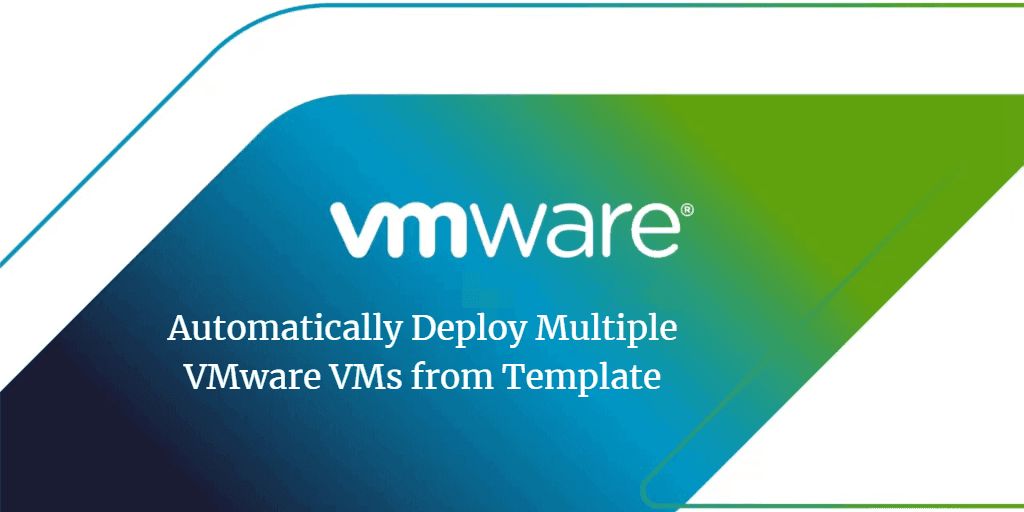Deploying multiple virtual machines (VMs) from VMware templates can streamline your virtualization management and save time. How to securely deploy multiple VMs from VMware template?

The following privileges are required in order to deploy multiple VMs from a template in VMware:
📌Make sure your host system has enough CPU, memory, and storage to support the virtual machines you intend to use.
📌Make a virtual machine template that has the required operating system, apps, and configurations installed.
📌Verify that it is sysprep'd for Windows virtual machines. Assign the new virtual machines to the appropriate network settings, including VLANs and IP address ranges.

A virtual machine that is a replica of the template is produced when a virtual machine is deployed from a template. The installed software, virtual hardware, and other template-configured attributes are all present in the new virtual machine.
This can be accomplished by deploying a virtual machine from a template:
1. Connect to your vCenter Server using your credentials:
Connect-VIServer -Server your_vcenter_server -User your_username -Password your_password
2. Before deploying, you need to define some variables for the template, target location, and VM configurations.
# Define variables $templateName = "YourTemplateName" # Name of the template $datastore = "YourDatastore" # Datastore for VM storage $vmFolder = "YourVMFolder" # Folder where VMs will be created $networkName = "YourNetwork" # Network to connect VMs $vmCount = 5 # Number of VMs to deploy $vmPrefix = "VM-" # Prefix for VM names
3. Deploy the specified number of VMs from the template.
for ($i = 1; $i -le $vmCount; $i++) { $vmName = "$vmPrefix$i" # Generate VM name # Clone the VM from the template New-VM -Name $vmName -Template $templateName -Datastore $datastore -ResourcePool (Get-Cluster -Name "YourCluster").ResourcePools[0] -NetworkName $networkName -Location $vmFolder # Optionally, you can customize the VM here # For example, setting a static IP or configuring other settings # Set-VMGuestNetworkInterface -VM $vmName -IPPolicy Static -IPAddress "192.168.1.$i" -SubnetMask "255.255.255.0" -DefaultGateway "192.168.1.1" Write-Host "Deployed VM: $vmName" }
4. Once the VMs are deployed, power on the VMs by running:
Get-VM -Name "$vmPrefix*" | Start-VM
1. In the vSphere Client, go to the VMs and Templates view.
2. Right-click on the template and start New VM from This Template wizard.
3. Customize network settings, CPU and memory allocation and disk provisioning options (thin or thick), etc. If you have multiple VMs, you can create a new customization specification for batch changes.
4. If you want to deploy multiple VMs, you can specify the number of VMs in the relevant section.
For example, if your template allows cloning, enter the number of instances you want to deploy on the Select clone options page.
5. Click Finish to start the deployment process.
AOMEI Cyber Backup is essential for deploying multiple virtual machines (VMs) by ensuring data protection and system stability.
Deploying multiple virtual machines from a VMware template enables you to rapidly scale your virtual infrastructure. With the methods provided in this article, you can ensure that the deployment process is automated rather than manually configuring individual virtual machines.